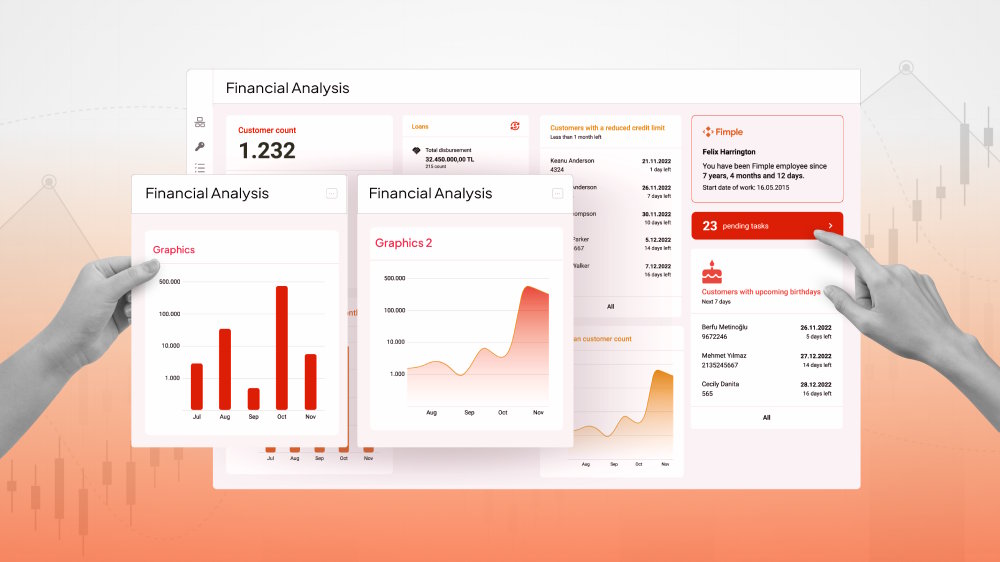
The Ultimate Guide to Frontend Frameworks
Frontend frameworks offer a plethora of pre-built tools and reusable code, streamlining the development of user interfaces. However, not all frontend frameworks are equal, which can make choosing the right one tricky. Let’s demystify the decision-making process for you.
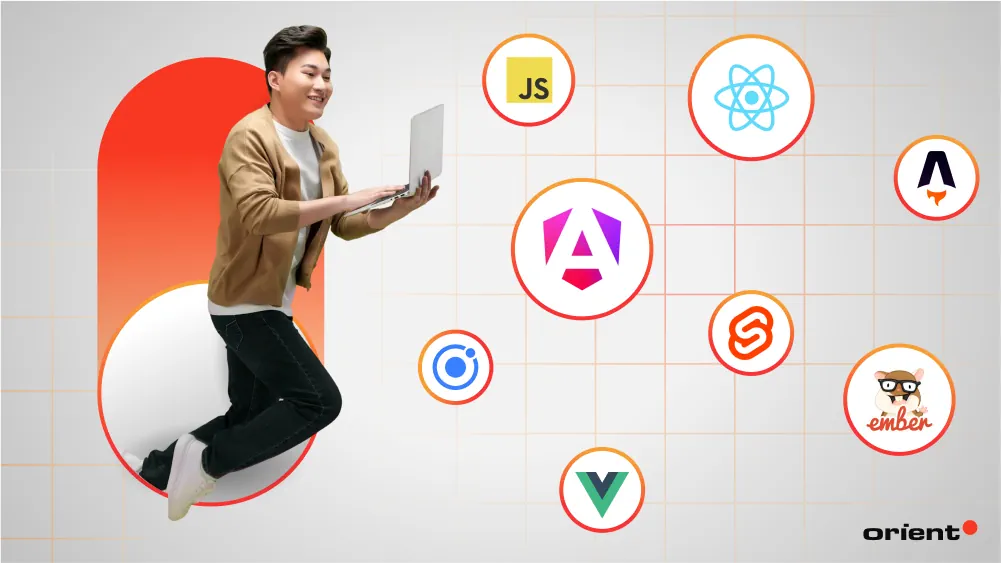
Content Map
More chaptersProviding a positive user experience is vital to attracting and retaining a loyal user base. And one of the key foundations of a great user experience lies in the frontend, the parts of the software application that users can see and interact with.
However, developing the frontend from scratch can be very time-consuming, which is why developers use frontend frameworks to streamline the development process and ensure a consistent user experience across different devices and platforms.
Read on to find out what frontend frameworks are, how they work, their pros and cons, the top frontend frameworks in use today, and how developers choose the best frontend framework to suit their needs.
Key Takeaways:
- Frontend frameworks help streamline the development of user interfaces by giving developers a wealth of pre-built tools and reusable code.
- From optimizing page loading times to establishing consistent coding guidelines, frontend frameworks help streamline frontend development in many ways.
- A reputable front-end development team will take the time to understand your technical requirements before recommending a suitable front-end framework for your project.
What Is a Frontend Framework?
It is a collection of pre-built tools and pre-written code that helps streamline development by making it easier for developers to create responsive, visually appealing, and consistent user interfaces (UIs).

The main purpose of a front-end framework is to speed up and streamline development, ensure a consistently positive user experience on all devices and platforms, and allow for easier updates and maintenance. They help streamline development by encouraging code reusability, where developers can quickly and easily produce important reusable components across multiple pages on a website or web application.
Frontend frameworks also establish strict coding practices and guidelines, which makes it easier for developers to collaborate, maintain the code base, and onboard new developers so they can quickly get up to speed with how to manage the code effectively.
How Do Frontend Frameworks Work?
Frontend frameworks work by containing a collection of pre-built tools and pre-written code. The pre-written code consists of JavaScript, CSS, and HTML components. JavaScript is responsible for the functional and interactive elements of a website or web app. HTML helps standardize the deployment of visual elements like font and typography. CSS allows developers to structure the app’s layout in a familiar grid-like pattern.

By incorporating these web technologies into the front end, developers can quickly and easily import reusable components into the app. Examples of reusable components include buttons and sliders, contact forms, and real-time maps.
Frontend frameworks can also help improve web app performance. Tools like Terser and CSSNano can help minify and compress HTML, CSS, and JavaScript files. Meanwhile, other tools like Visme have built-in accessibility checkers to help developers improve the user experience by evaluating font sizes and color contrast to recommend quality-of-life improvements.
What Are the Pros and Cons of Frontend Frameworks?
While there are many advantages to incorporating frontend frameworks into a website or web app, there are potential drawbacks to consider. Let’s take a closer look at both sides in greater detail.
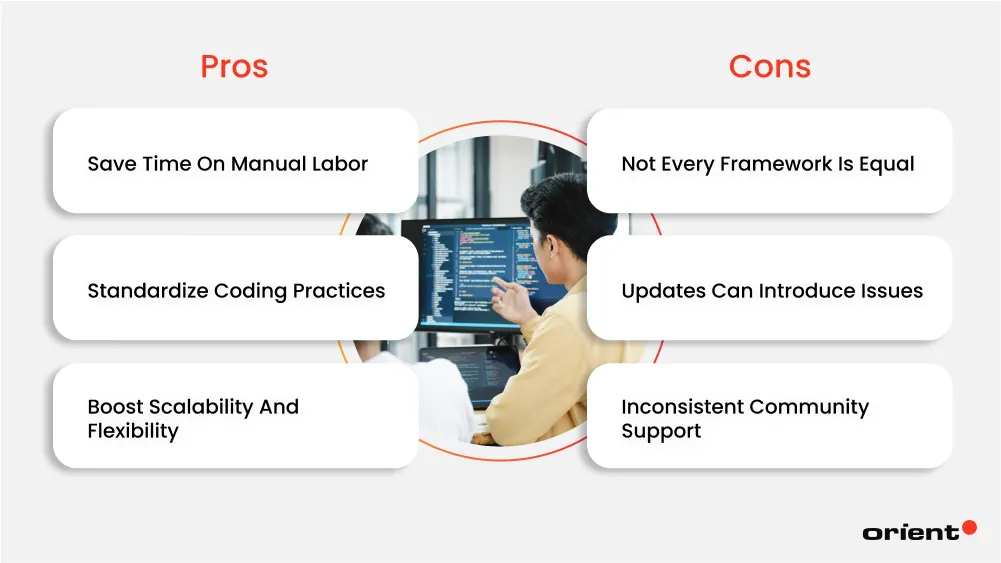
Pros of Frontend Frameworks
Some of the many reasons to use a frontend framework are to:
- Save time on manual labor – By using pre-built components and pre-written code, developers can save time on writing boilerplate code (code that is repeated multiple times across a software application). Not only does this help speed up development, but it also slashes development costs so the savings can be passed onto the client.
- Standardize coding practices – Frontend frameworks help establish consistent coding practices across an entire website or web app. This makes it easier for developers to collaborate, maintain code, and onboard new developers.
- Boost scalability and flexibility – Most front-end frameworks are designed to be highly scalable. Reusable code makes it easier to add and remove features, as well as modify existing functionalities in a unified platform. This is particularly useful for start-ups, as they often experience rapid growth and a rising user base in a short time.
Cons of Frontend Frameworks
Some of the many potential drawbacks of a frontend framework are:
- Not every framework is equal – Different frameworks prioritize certain features and ways of working over other frameworks. Choosing the wrong front-end framework could negatively impact the productivity of the development process. Developers may find themselves fighting with overly opinionated frontend frameworks that push a certain coding style, which may not be compatible with the web app’s goals or tech stack.
- Updates can introduce issues – It’s common for developers to start using a frontend framework, only for an update to start causing issues. Updates may result in older code conflicting with newer code, incompatibility issues with legacy architecture, and more. At Orient Software, we thoroughly vet each update that comes out for our front-end frameworks. This ensures that we only deploy updates that are compatible with your website or web app, maintaining version stability while prioritizing security as well.
- Inconsistent community support – When it comes to community support, not every frontend framework is equal. Some frameworks are newer than others, which means that they have less documentation, a smaller community support group, and fewer solutions provided to common issues. As a result, developers may spend more time troubleshooting common issues rather than developing innovative websites and web apps.
What Are the Top Frontend Frameworks in Use Today?
The most popular frontend frameworks today are React, Vue.js, Angular, and Svelte. There are many other front-end frameworks out there, but for brevity’s sake, we’ll cover just these four today. This information will help you better understand what developers look for in a viable front-end framework.
React
Developed by Meta (formerly Facebook) and released in 2013, React is an open-source JavaScript library utilized for developing user interfaces. React operates on a component-based framework, which makes it easy for developers to break down a web app into reusable components.
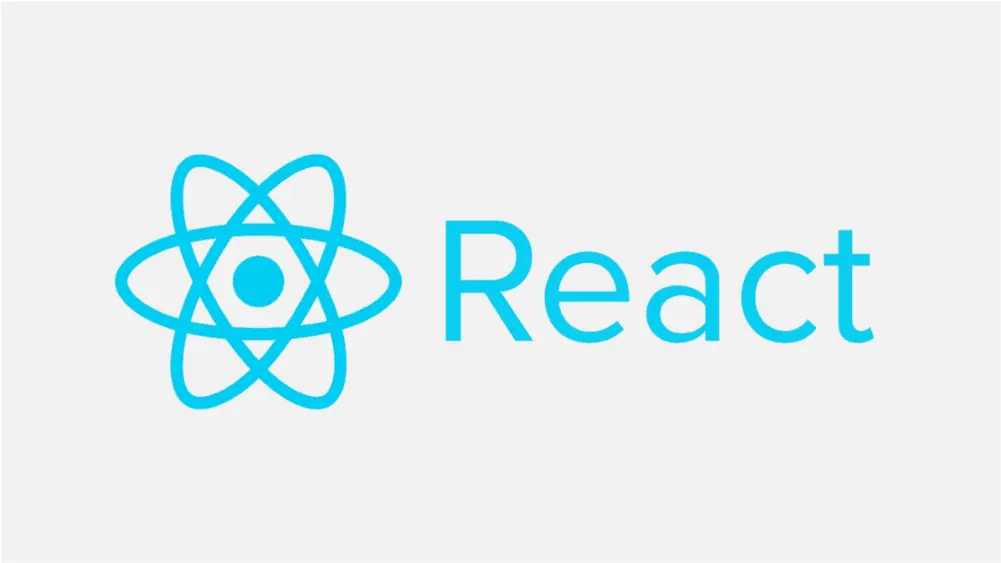
One of the big reasons to use React is its ability to instantly reflect UI changes in real time. This is made possible by the virtual DOM (Document Object Model), a virtual copy of the original DOM. When changes are made, React implements the changes into the virtual DOM, and then the original DOM incorporates only necessary changes into the app without reloading everything.
Over a decade since its release, React has had a strong community following. This means there are plenty of resources to help developers learn how to use it, streamline the learning process, and resolve common issues.
Vue.js
Developed and released by former Angular developer Evan You in 2014, Vue.js is a JavaScript frontend framework used for developing UIs.
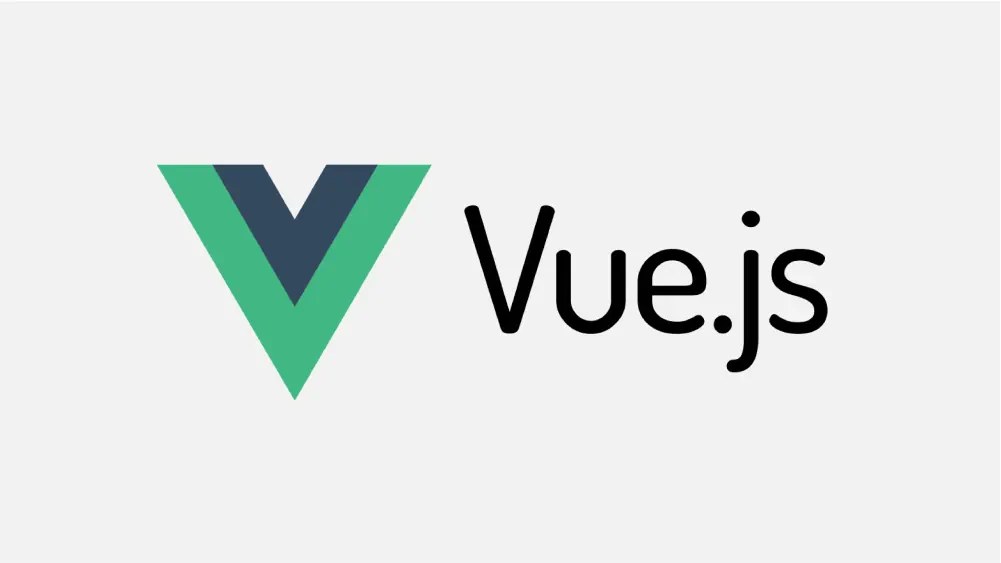
Vue.js adopts the model-view-controller (MVC) architecture pattern, which facilitates the use of two-way data binding. This helps streamline the flow of data between the model and view layers, which helps automatically update UI changes and reduce boilerplate code.
Vue.js is also very lightweight and economical. The core library takes up a mere 20kb, which helps reduce loading times. These qualities make Vue.js ideal for prototyping and minimum viable product (MVP) development, as it’s easy to learn and use to build small-to-medium web apps.
Angular
Developed and released by Google in 2016, Angular is a type-based, open-source frontend framework for building large-scale, dynamic web applications.
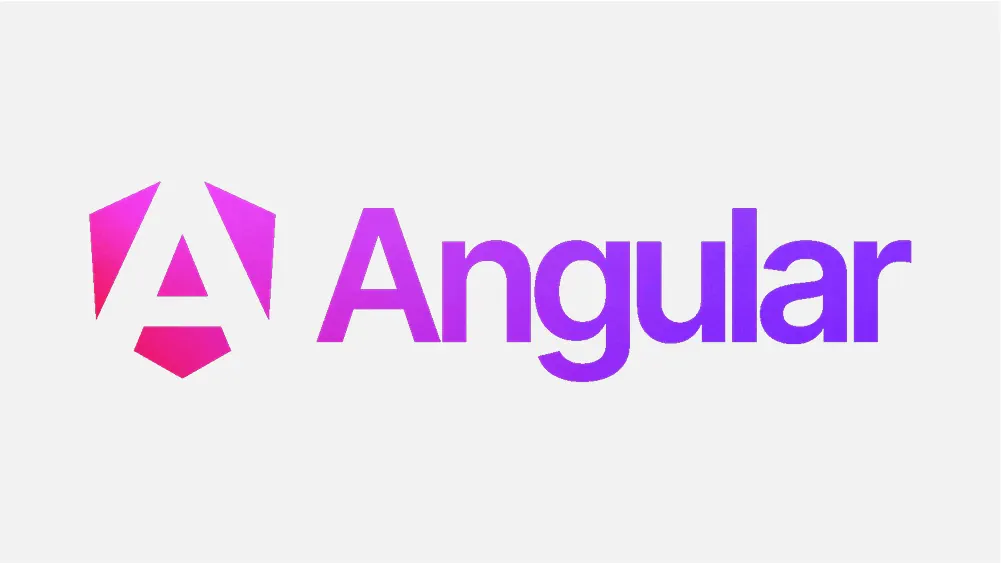
Similar to Vue.js, Angular also supports two-way data binding, so any changes made in the model are immediately reflected in the view layer. Another benefit of Angular is that it supports dependency injection. This feature allows developers to incorporate features from some parts of an app into another app.
Angular also supports TypeScript, which encourages static typing. Static typing is designed to help catch errors during development, which makes it easier to reduce runtime bugs. As a result, clients will receive higher-quality websites and web apps.
Svelte
Developed by Richard Harris in 2016, Svelte is a relatively new front-end framework.
While other frameworks like React and Angular do most of the work inside the web browser, Svelte is different. Svelte compiles highly optimized vanilla JavaScript at build time, which eliminates the need for a Virtual DOM.
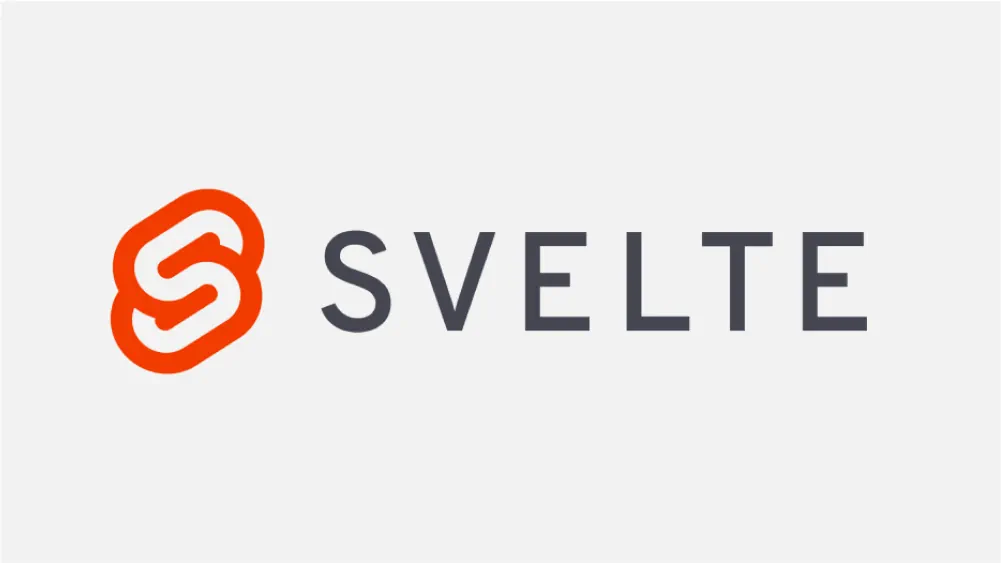
This leads to smaller bundle sizes and faster runtime performance, meaning only the necessary code is sent to the browser. Thanks to its minimalist design, Svelte is ideal for developing small, lightweight websites and web applications. It also provides smooth updates to real-time apps, such as chat apps.
How to Choose the Right Frontend Framework for Your Project
Many factors influence the type of front-end framework that’s right for your project. These include the scope and goals of your project, the existing technology stack you are working with, and the skills and capabilities of your development team.
At Orient Software, we take the time to thoroughly analyze your existing front-end stack. If you’re building a new web app from scratch, we identify your target audience, business goals, and desired platforms. This information enables us to propose a front-end framework that suits your technical requirements and business goals.
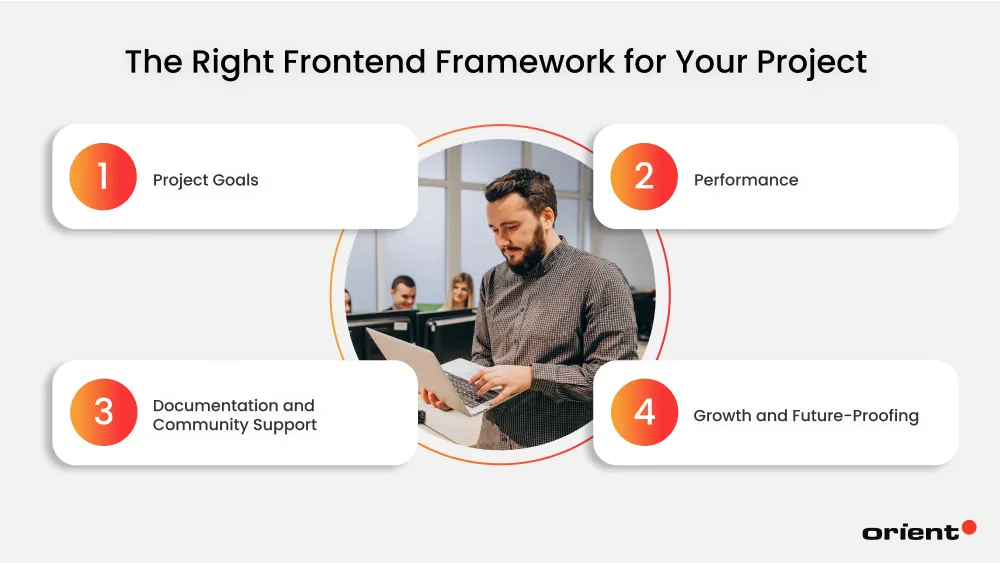
Here is what developers consider when choosing a frontend framework:
Project Goals
Do you want to build a small, single-page application (SPA)? Or would you rather have a large, complex, multi-page web app? Either way, you need a frontend framework that is compatible with your tech stack and able to help you achieve your goals.
If you’re a start-up developing an MVP, a lightweight framework like Vue.js or Svelte could be ideal. However, if you’re developing a large-scale web app with multiple pages, a framework like React is better suited for handling high traffic and multiple functionalities at once.
Performance
Are you building a complex app that you expect to receive a high influx of customers? If so, then consider a framework like Angular.
Thanks to the combination of the virtual document object model and the Ahead-of-Time (AoT) compiler, Angular can compile JavaScript and TypeScript during the build process. This helps optimize the bundle size and reduce unnecessary code, resulting in faster-performing large-scale applications.
However, if your performance requirements are relatively low, then a lightweight solution like Vue.js could be more suitable. Your web development team will consider your performance needs, ensuring your web app offers fast page loading and rendering.
Documentation and Community Support
Frontend frameworks with a history of extensive documentation, community support, and troubleshooting advice are favored over less popular and less explored frameworks. Such frameworks give developers the confidence that, no matter what happens, they can find a resolution to almost any issue they face.
Growth and Future-Proofing
Do you expect the scale and capabilities of your website or web app to grow over time? This is a common concern for start-ups, as their audience and needs may grow as the business gains its footing.
For this reason, we encourage clients to consider their future growth plans. If you intend to add features or grow your user base over time, then plan for scalability. Since most front-end frameworks follow a modular architecture pattern, choosing one that can grow with your business is easy.
Also, stick with a framework for web development that has a solid community support group. This way, you can be confident that your front-end framework will receive regular updates and guidance on potential future issues.
Conclusion
Choosing the right front-end framework is key to the success of your website or web app. The right development framework can provide a positive user experience, ensuring optimal performance and user-friendliness across multiple platforms and devices.

At Orient Software, our web development team is highly skilled in all aspects of front-end development. You can count on us to develop user interfaces that are responsive, visually stunning, and able to deliver a consistently smooth user experience.
Contact us today. Discover how our front-end web development services can enhance the quality of your web app.





